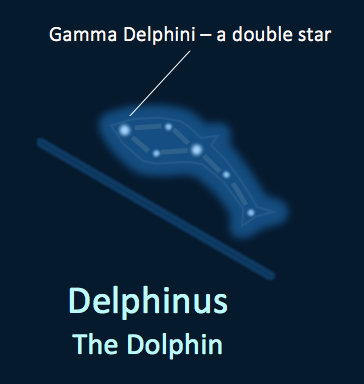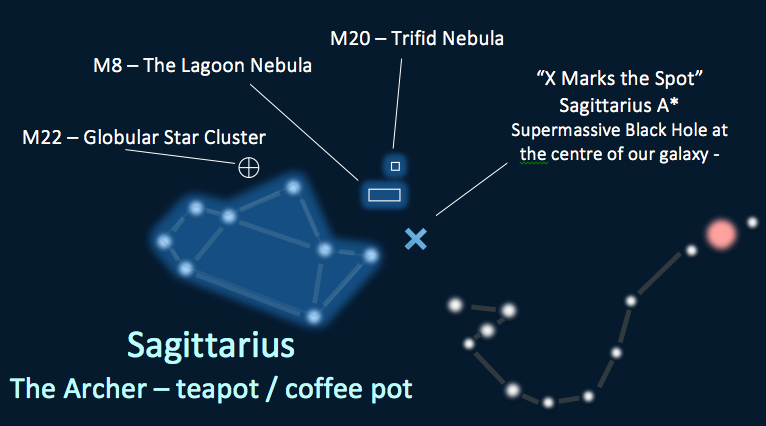In last month’s featured constellations, we discussed the Summer Triangle, Scorpius, and Scutum.
This month, we’ll discuss Sagittarius, Capricornus, and Delphinus. Last month’s constellations are included on the sky chart below for reference.

Delphinus the Dolphin
Delphinus is one of those constellations that really resembles what it is supposed to be. It’s easy to see the outline of a dolphin breaching over the top of an ocean.

There are two stories that speak of Delphinus. In one, the dolphin is sent as a messenger by Poseidon to court his future wife.
In another story, Delphinus is the real life rescuer of Arion, who was thrown overboard by shipmates who wished to steal his money. A final song on his lute lured a group of dolphins, one of which rescued Arion from the sea.
Delphinus has a beautiful double star, Gamma Delphini, which marks out the nose of the dolphin. A small telescope reveals two coloured stars in orbit around one another.
Capricornus the Goat Fish

Unlike the aptly named Delphinus the Dolphin, Capricornus does not look like a goat or a fish.
However, the origins of this constellation are among the oldest of any known, going back to ancient Sumerian and Babylonian times.
In Greek times, this constellation was associated with Pan, god of the countryside. He could instill “pan”-ic with his loud calls.
Sagittarius the Archer (or the teapot/coffee pot)
Sagittarius is meant to be an archer riding his horse. This is not to be confused with a centaur, which is a half horse and half human, also often associated with a bow and arrows.
From our northern latitudes, it is hard to see the horse part of this constellation, as it is usually low by the treeline. As a result, most northern residents see a teapot or coffee pot as shown in our diagram.

When we look towards Sagittarius, we are looking towards the centre of our galaxy. In fact, the very centre is just off and upwards from the spout of the teapot.
Astronomers have observed much evidence to support a super massive black hole at the centre, which they refer to as Sagittarius A. This black hole has the mass of over four million suns!
But don’t worry; we are far enough away that it has little effect on us.
Want more info on what to look this month?
Check out our “Eyes on the skies” series.
